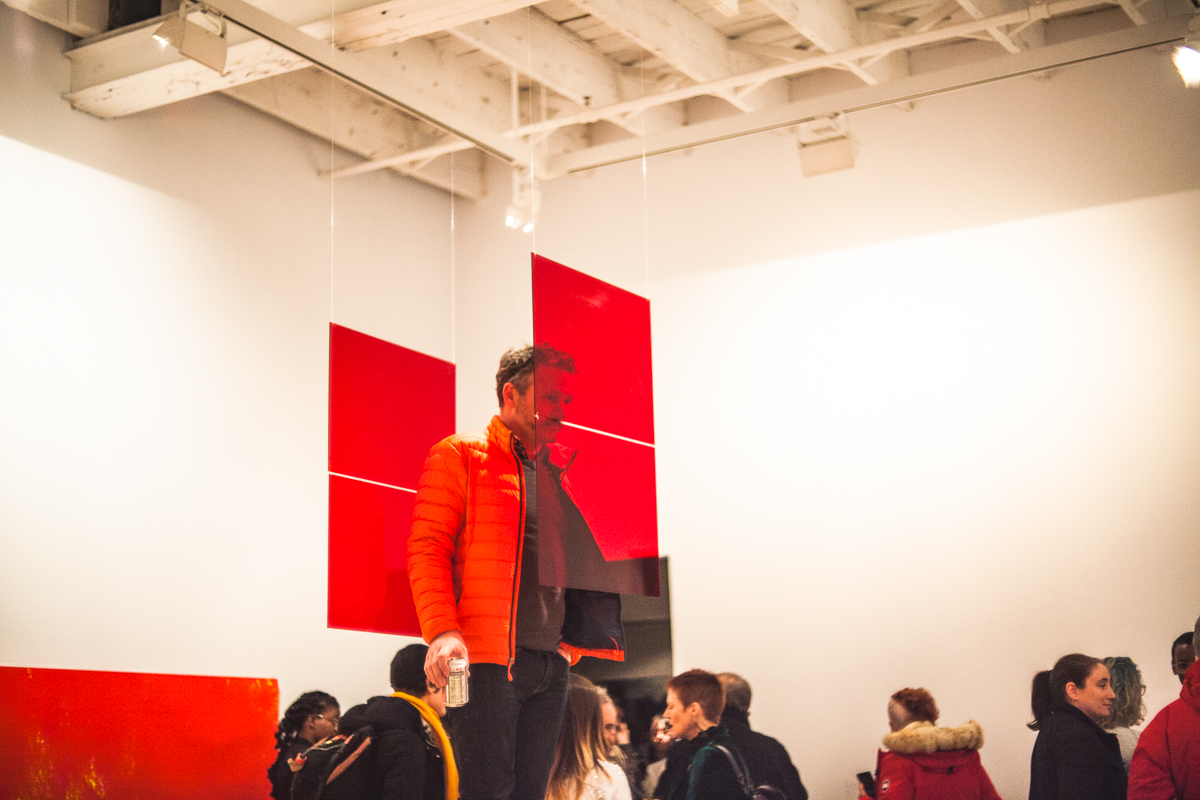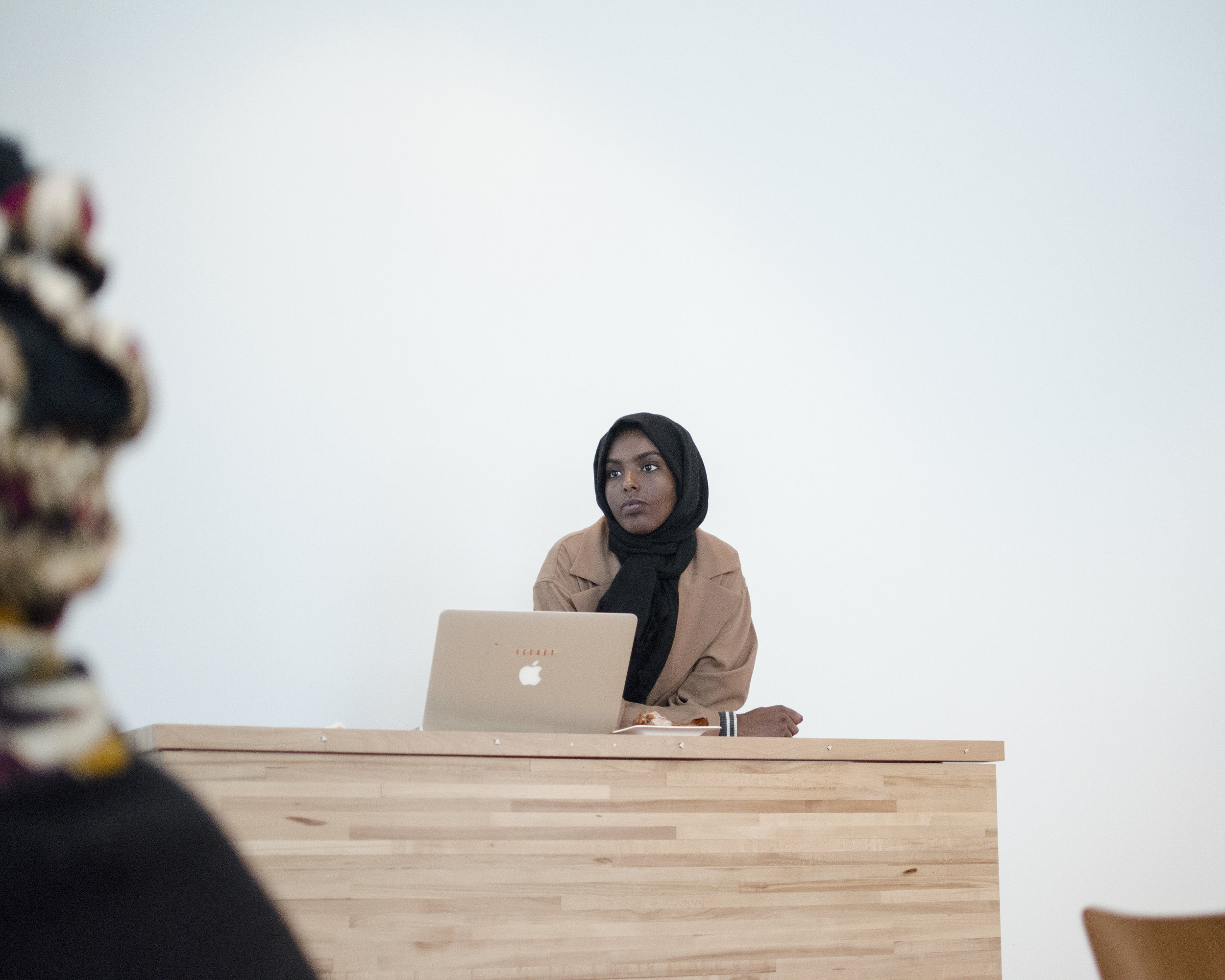I want you to know that I am hiding something from you / since what I might be is uncontainable (2019)
"I want you to know that I am hiding something from you / since what I might be is uncontainable" is a two-part installation is concerned with the perception and visibility of racialized bodies. Nnebe creates an interactive experience for the viewer by playing with opacity and space; the act of navigating the gallery becomes a medium for the work itself. Focused on the process of racialization, specifically on how it impacts Black communities, the work attempts to ground discussions around representation in theory coming from the French Caribbean, as well as African cosmologies and folkloric traditions.
Key words: Black visibility; opacity; stand-point theory; Black spatiality; positionality; phenomneology; hesitation; Fanon; objectification; racial capitalism; the gaze; raciaization; Blackness;
The first room of the installation acts as a game of hide-and-seek that the viewer is unknowingly brought into. The installation can only be experienced from one position within the gallery space - from atop a wooden podium that, unbeknownst to the viewer, is fashioned after a slave auction block. It is only from this position that the viewer can decipher hidden images and text incorporated into the banners on the wall. Playing on ideas from feminist standpoint theory, here, within the space of the installation, as in society, what is seen and unseen is dictated by one’s positionality. In many ways, this action asks us to think about the perspectives and knowledge production of those who had been enslaved, who saw, experienced and understood the horrors of this world system in ways we may still struggle to comprehend.
The hidden images and text make reference to the figure of Anansi the spider – a trickster God in Ashanti (Ghanaian) folklore – as a way of articulating an understanding of Black subjectivity that, in its impenetrability, remained unbreakable.
















The second room is a light and audio installation that visualizes the violence inherent in attempts to render the other transparent. The installation in this room features an exploded view of the artist’s body, with limbs printed on acrylic and hung from the gallery ceiling. Building on ideas and visual explorations from earlier works (see ‘Somatic Sation’ exhibition, 2017; “Radical Imaginaries”, 2015), this dismantling of the black body visualizes Frantz Fanon’s description of the process of racialization: “my body returned to me spread-eagled, disjointed, redone, draped in mourning on this white winter’s day.”
A light is placed in the centre of the room, projecting the image of the artist’s body onto the gallery walls. As viewers navigate the room, shadow limbs are painted on their clothes and skin, implicating them in this moment of racialization. While the installation serves in part to depict both the physical and psychological impacts of this process on the day to day lives of Black people, it also engenders and invokes a Black gaze capable of enacting a concomitant sense of belonging. To speak to the complexities of Black identity and Black community, the installation employs audio from “Black Is… Black Ain’t,” the final documentary film by Marlon Riggs, which adeptly explores the give-and-take that comes with identifying and being identified as Black.






















Photos from Nnebe’s 2015 ‘Radical Imaginaries’ (a project created while studying at McGill University), as well as works from her 2017 solo exhibition ‘Somatic Satiation’ which both inspired the 2019 installation:

















The artist would like to acknowledge funding support from the Ontario Arts Council, an agency of the Government of Ontario.

